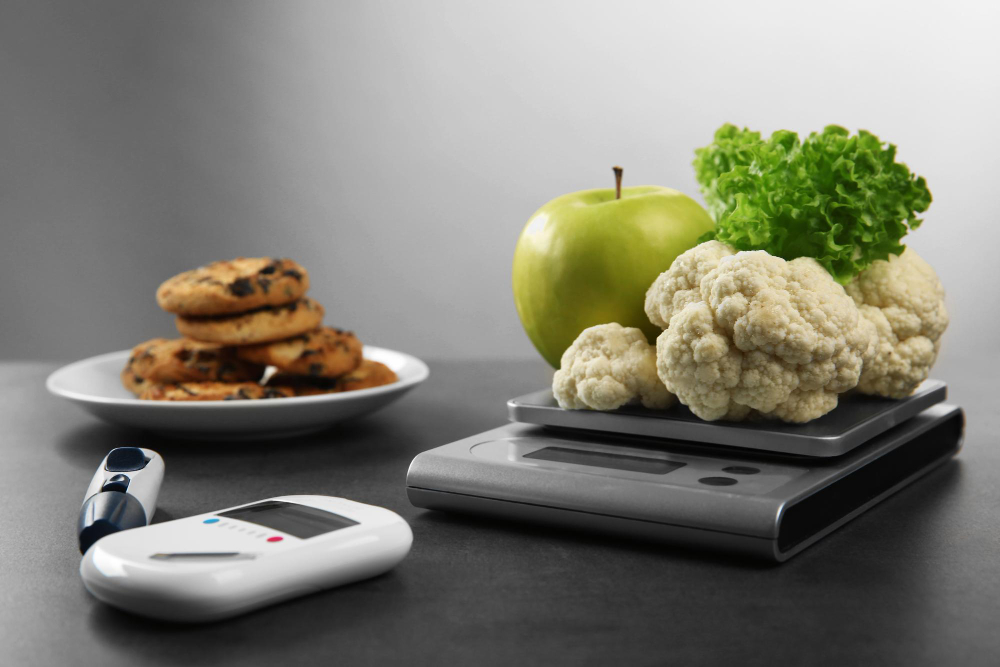The Difference Between GI and GL, What It Means for Fat Loss and Muscle Building
Carbohydrates have always carried a love–hate relationship in the fitness world. For some, they’re the essential fuel for powering through workouts and building muscle. For others, they’re the villain that keeps fat loss at bay. But the truth is a little more nuanced, and much of that nuance lies in understanding two important concepts: Glycemic Index (GI) and Glycemic Load (GL).
These two measures often get used interchangeably, yet they tell very different stories about how your body responds to carbs. And for anyone chasing fat loss or muscle-building goals, knowing the difference can be the bridge between confusion and clarity.
Glycemic Index: Speed of the Sugar Surge
Imagine eating a bowl of white rice. Within minutes, glucose begins to flood your bloodstream. Compare that to a serving of lentils, which releases sugar slowly and steadily. The Glycemic Index (GI) is a way of ranking foods by how quickly they raise blood sugar compared to pure glucose, which has a GI of 100.
- Low GI: 55 or less (slow, steady release)
- Medium GI: 56–69
- High GI: 70+ (fast spike)
But here’s the catch: GI doesn’t tell the whole story. A slice of watermelon, for example, has a GI of around 76—yet because it contains very little carbohydrate per serving, the actual effect on blood sugar is quite small. That’s where Glycemic Load comes in.
Glycemic Load: The Bigger Picture
While GI focuses on the rate of glucose release, Glycemic Load (GL) combines that rate with the quantity of carbs you actually eat. It’s calculated by multiplying the GI of a food by the grams of carbohydrate in a serving, then dividing by 100.
This means a food can technically have a high GI but still a low GL if the portion doesn’t deliver much carbohydrate. Watermelon is a perfect example—it looks “bad” on the GI chart, but its GL per serving is only about 8, which is considered low.
So if GI is the speedometer, GL is the odometer. One tells you how fast you’re going, the other tells you how far you’ve actually traveled.
What This Means for Fat Loss
Now the important question: does eating low-GI or low-GL foods actually help you lose fat?
The research is mixed. Large reviews, including data from nearly 2 million people, have found no consistent link between dietary GI and weight change. In other words, simply swapping “high GI” carbs for “low GI” ones doesn’t guarantee the scale will move.
That said, some evidence suggests low-GL diets can provide a modest advantage, especially for individuals with obesity. A 2022 meta-analysis found people with higher BMIs lost about 1 kg more on low-GL diets compared to other approaches. Low-GI foods may also help with appetite control and satiety, which can make sticking to a calorie deficit easier.
But here’s the reality check: the strongest predictor of fat loss is still total calorie balance and overall food quality. Choosing high-fiber, minimally processed carbs—many of which naturally have lower GL—makes it easier to manage hunger and stay consistent.
What This Means for Muscle Building
On the other side of the spectrum is muscle growth, where carbs aren’t the enemy but rather an ally. Here, the conversation shifts from weight loss to insulin dynamics.
Insulin is often thought of as a “storage hormone,” but for lifters it has an anabolic role. After training, high-GI or higher-GL carbs can trigger an insulin spike that helps shuttle glucose and amino acids into muscle cells. This not only replenishes glycogen but also supports recovery and growth when paired with protein.
This is why many athletes strategically time higher-GL carbs around workouts, then rely on lower-GL carbs during the rest of the day. It’s a way of fuelling the body for performance and recovery while keeping insulin steadier during periods when fat burning is the priority.
Of course, it’s worth remembering: muscle growth depends primarily on resistance training and sufficient protein intake. Carbs are the supporting act, not the lead role.
Putting It All Together
So where does this leave us?
- For fat loss: Low-GL choices may help with satiety and modestly support weight loss, but calorie balance remains king. Focus on whole foods—vegetables, fruits, legumes, and whole grains.
- For muscle building: Use higher-GL carbs around your workouts to maximize recovery, and keep the rest of your day centered around lower-GL options for steady energy.
- For everyone: Don’t obsess over numbers. Think of GI and GL as tools, not rules. What matters most is how your carb choices fit into your broader nutrition and training plan
- GI and GL aren’t just nutrition trivia—they’re part of the bigger story of how your body handles carbs. GI shows you the speed, GL shows you the impact, and together they help paint a clearer picture of metabolic response.
For fat loss, they’re helpful but not magic bullets. For muscle building, they’re strategic tools in timing carbs to fuel recovery. In both cases, success still comes down to the fundamentals: consistent training, smart calorie management, and a diet rich in whole, nutrient-dense foods.

